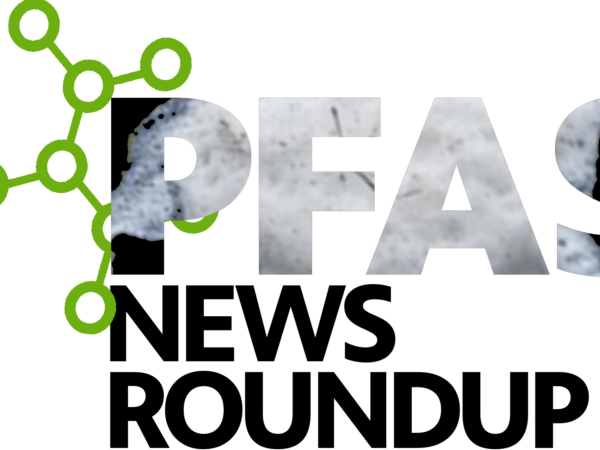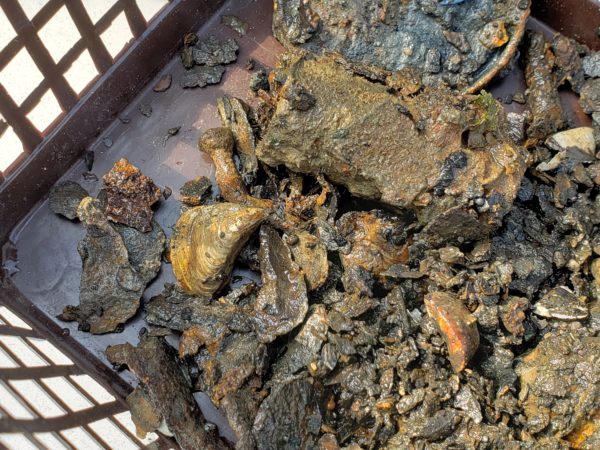
By Danielle Kaeding, Wisconsin Public Radio
This article was republished here with permission from Wisconsin Public Radio.
The Environmental Protection Agency finalized ballast water standards last Tuesday that would require new vessels in the Great Lakes to install treatment systems to prevent the spread of invasive species, but the standards will not apply to existing ships.
The regulations are part of a supplemental rule that aimed to bolster standards on dumping ballast water.
In 2018, Congress passed the Vessel Incidental Discharge Act to streamline a patchwork of local, state and federal requirements for the shipping industry. The law requires the EPA and U.S. Coast Guard to develop regulations for mostly larger vessels and fishing boats. In recent years, the agency began crafting standards to exempt lake vessels or “lakers” and examined whether to require treatment for newer boats.
Molly Flanagan, chief operating officer with the Alliance for the Great Lakes, said she’s disappointed the EPA isn’t regulating vessels that operate solely within the Great Lakes.
“We know they can spread invasive species,” Flanagan said. “In order to truly protect the Great Lakes, we need EPA to be regulating every vessel operating in the Great Lakes.”
A 2018 report found lake vessels are moving invasive species from the lower lakes to western Lake Superior. Researchers at the University of Wisconsin-Superior found several species of tiny zooplankton that hadn’t been previously documented in the lake.
The EPA said it’s not requiring the existing U.S.-flagged fleet to treat ballast water due to the cost of converting vessels and environmental challenges in the lakes, including icing and other factors. The agency said lake conditions can clog filters and reduce the effectiveness of ballast water treatment systems.

The Mark W. Barker arrives in the Twin Ports on Tuesday, Sept. 6, 2022. The vessel is the first U.S.-flagged freighter built on the Great Lakes in nearly 40 years. Danielle Kaeding/WPR
State regulators had urged EPA to require standards for existing lakers
The Wisconsin Department of Natural Resources said vessel operators and a treatment system manufacturer haven’t indicated to the state that lake conditions would prevent a reasonable level of treatment most of the time. Wade Strickland, director of the DNR’s Office of Great Waters, told WPR that agency officials believe stronger protections could have been put in place.
“For example, if a vessel is in Lake Ontario, an existing laker, and it picks up an (aquatic invasive species) and then brings it to Lake Michigan, it doesn’t matter if it’s a new or an existing vessel,” Strickland said. “It’s still carrying that and introducing that invasive species to Lake Michigan. That’s our biggest concern.”
Strickland said he feels the EPA’s hands were tied because the 2018 law requires the agency to consider whether treatment is “technologically available and economically achievable.”
The Canadian government had also urged the EPA to regulate lakers built after 2009 to “advance environmental protection and binational consistency” in the Great Lakes, as well as allow older vessels until 2030 to comply with national standards.
As for new lakers, the EPA estimates it would cost those vessels about $2.2 million each year to comply with the new standards.
Great Lakes fleet cites concerns with current treatment systems
The Lake Carriers’ Association represents the U.S.-flagged fleet of 44 lakers operating on the Great Lakes. Jim Weakley, the group’s president, declined an interview Tuesday, saying officials are still reviewing the final rule.
In December, the group submitted comments opposing the agency’s proposal to require installation of treatment systems on new lakers, adding that the EPA underestimated costs. A 2017 report commissioned by the shipping industry estimated it would cost around $639 million to install treatment on existing vessels, as well as $11 million in annual maintenance costs.
“New Laker operators should not be required to expend substantial funds for installing and operating a (ballast water management system) that struggles with operation in the Great Lakes, lacks vendor support, and greatly impacts vessel operations,” the group wrote.
The Lake Carriers’ Association argued that current systems haven’t been proven to reduce invasive species “to any consistent level” in treated ballast water. In its comments, the group said treatment systems are unreliable in the Great Lakes, adding that current technology significantly slows cargo loading and unloading.
The group also disputed that technological advancements in those systems would become available by the time standards would take effect. The EPA said the new standards will not be put in place for up to two years while the Coast Guard develops regulations to enforce them.
No new introduction of invasive species on the Great Lakes since 2006
Since 2006, the U.S. and Canadian governments have required oceangoing vessels to dump water they’ve taken on elsewhere and flush it with saltwater before entering the Great Lakes in a practice known as “swish and spit.” Unlike oceangoing ships, lakers don’t have that option since they operate solely in the Great Lakes.
Lake vessels can span 1,000 feet and discharge more than 16 million gallons of ballast water. In the Great Lakes, at least 188 invasive species had been documented as of last year. It costs an estimated $500 million each year to manage invaders like quagga and zebra mussels that can damage power plants, water systems, boats, and docks. Since 1959, ballast water from ships accounts for up to 70 percent of all introductions.
Even so, researchers note there have been no new introductions of aquatic invasive species through ballast water since 2006.
In 2020, UW-Superior received $5 million to speed up ballast water research and testing of new technologies to prevent the spread of invasive species. The university owns and operates the only land-based testing facility in the Great Lakes region for ballast water treatment systems.
The EPA must review its standards every five years, and the agency said it expects research will support new or updated standards in the future.
Wisconsin Public Radio, © Copyright 2024, Board of Regents of the University of Wisconsin System and Wisconsin Educational Communications Board.
Catch more news at Great Lakes Now:
Harnessing mussels to filter fresh water
Finding creative new ways to manage invasive cattails
Featured image: The Mark W. Barker glides under the Duluth Aerial Lift Bridge on Tuesday, Sept. 6, 2022. (Danielle Kaeding/WPR)




